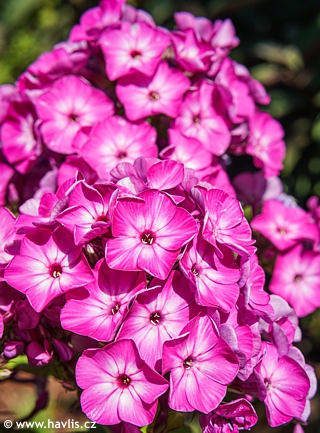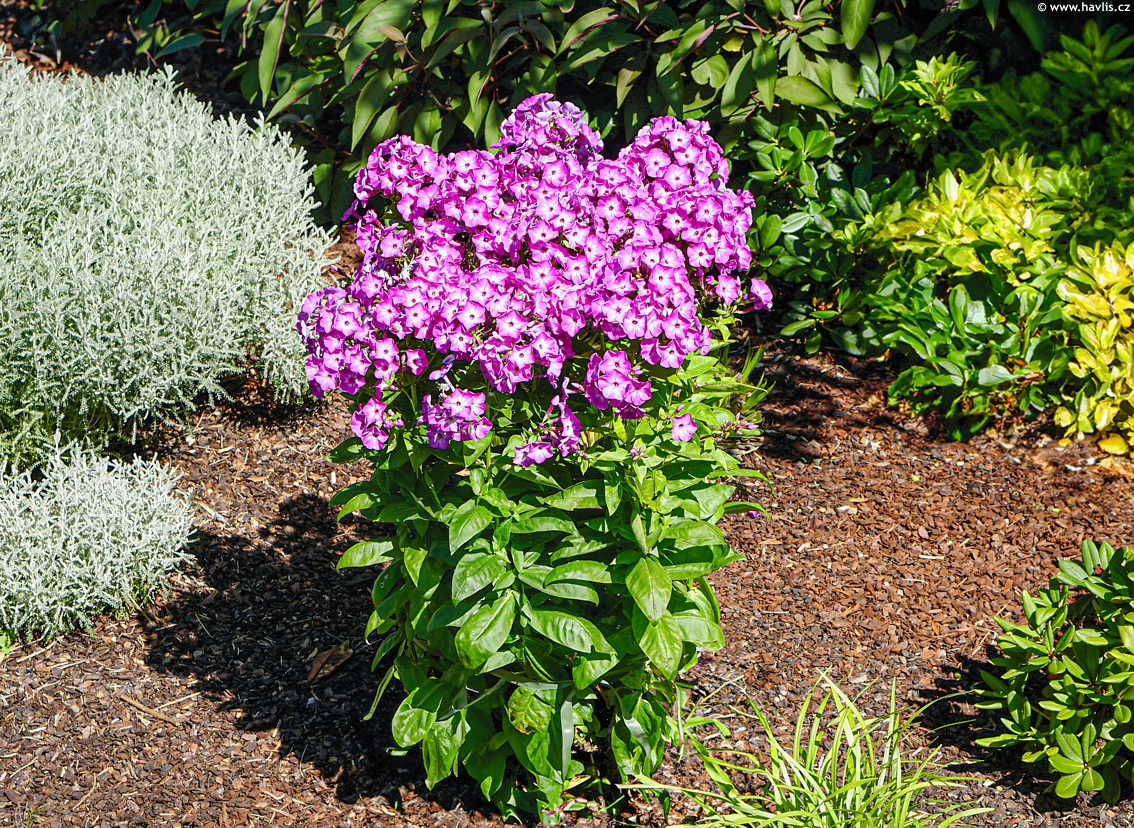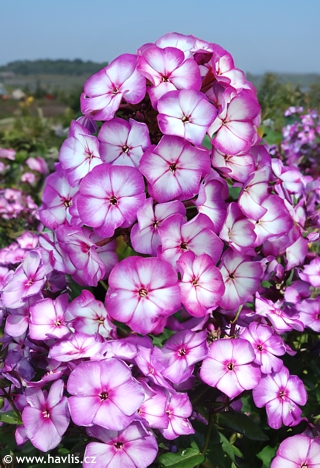Phlox paniculata 'Barthirtythree' PURPLE EYE FLAME perennial phlox (panicle type)
size/type
mid-sized perennial,mid-sized perennial
usual height
0,5-0,6m
usual width
0,5-1m
leaves
deciduous broadleaf
colour of leaves
flowers
showy
colour of flowers
blooming time
June-August
location
full to partial sun
soil type
any (acidic to alkaline)
soil moisture requirements
evenly moist (dislikes drought)
USDA zone (lowest)
4 (down to -34°C)
winter protection
for zone 5+6

for zone 7

categorized
Phlox
I love seeing that even so-called old-fashioned plants such as perennial phlox still attract breeders’ attention and they invest time and energy in crossbreeding and selecting new, hardier, healthier, and more beautiful varieties. Their popularity is proved by the fact that they occupy 3 large pages in the RHS Encyclopedia of Plants (not many plants can boast that).Description of the plant:
PURPLE EYE FLAME is another perennial phlox from the FLAME series developed by a phlox specialist Gosen Bartels from the Netherlands. It bears bright purple pink flowers with pale to almost white centres. They are about 3 cm across, sweetly and spicy fragrant, composed in rounded to conical terminal panicles, and appear in profusion from June until August. Deadheading of panicles with spent flowers will encourage formation of side branches with new, smaller panicles of flowers later in the season. Or you can cut off the whole stem about 5 cm above ground and new stems with fresh unexhausted leaves appear in no time, and short stems with late summer flowers. Don’t forget to feed it after such hard pruning. PURPLE EYE FLAME phlox grows about 60 cm in height and bears broadly elliptic, 7-8 cm long, 3-4 cm wide, dark green, partially glossy leaves. US plant patent No. PP16437 was granted in 2006.
Growing phlox is easy. It likes almost any garden soil, fertile or poor, but with enough nutrients the flowering will be heavier, and the plant will not suffer common phlox diseases. It only dislikes long-lasting drought or quick changing of wet and dry spells – in such environment its leaves will be prone to powdery mildew. They are long-lived plants that will stay in your garden until you dig them out. Sunny location is preferred but it will flower in partial shade, too. Hardy to about -34°C (USDA zone 4).
Last update 11-10-2023
QUICK PRICE OVERVIEW
CURRENTLY SOLD OUT
WANT TO TRY A SIMILAR PLANT?


















